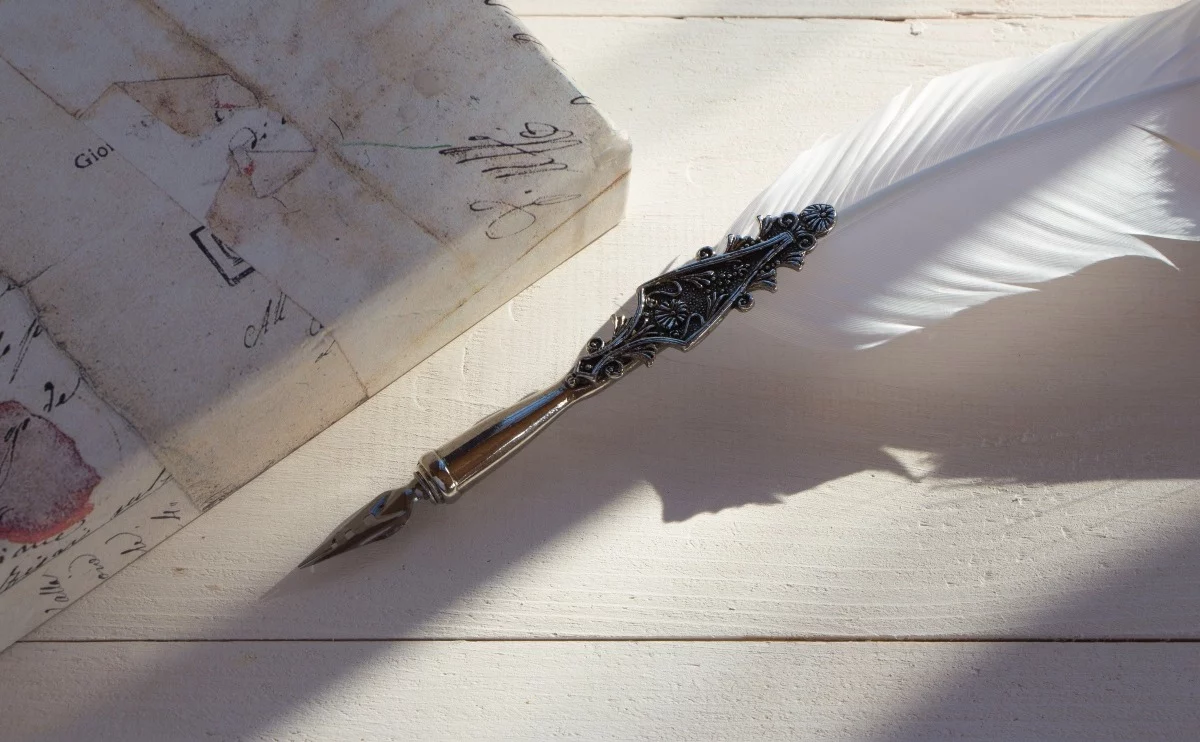Here’s what the Pantoum poetry form is:
A pantoum is a type of poem consisting of repeating quatrains, or four-line stanzas.
Pantoums can be of any length.
The pantoum is of Malay origin, specifically the Malay poetic verse form pantun berkait.
So if you want to learn all about the Pantoum poetry type, then you’ve come to the right place.
Keep scrolling down!

Forms of Poetry: The Pantoum

Pantoums, much like villanelles, are a type of poetry that heavily rely on the repetition of lines.
They differ drastically in their exact execution, however, as a pantoum eschews some of the other limitations of formal poetry to focus more on repetition as technique.
The pantoum is a relatively new addition to the list of poetic forms, at least compared to its peers, having only become an English form in the last few centuries.
While the form it is based on has a rich heritage, the pantoum itself is an interesting case where a sort of “knock-off” of an existing form has evolved into a separate entity.
Basic Properties of the Pantoum

| Rhyme Structure | Optional |
| Meter | Optional |
| Origin | Malaysia |
| Popularity | Relatively unpopular, though the preceding form (the pantun) does have a place in Malaysian history and culture. |
| Theme | Varies |
How Are Pantoums Structured?

Pantoums are structured entirely from quatrains.
The most common length for a pantoum is 16 lines, but they can be extended due to the nature of the structure.
Pantoums do not have to rhyme, but many pantoums have utilized alternating rhymes (ABAB BCBC, etc).
The most common meter for pantoums is Iambic tetrameter, fashioned after a ballad’s typical scheme, but this too is optional.
In a pantoum, the second and fourth lines of a stanza become the first and third lines of the next stanza.
This continues until the final stanza of the poem, in which the first line of the entire poem is reused as the last line and the third line of the very first stanza is used as the second line of the very last.
Ideally, these repetitions will give the lines new meaning as they reappear, through tricks such as recontextualization or changes to punctuation (such as placement of commas in the line).
By the time the first line of the poem reappears at the very end it should, in an advanced pantoum, have an entirely different meaning within the context of the final stanza.
Most of the difficulty of a pantoum comes from trying to find ways to give lines new meanings without making any drastic changes to the syntax of the line.
History of Pantoums

Pantoums come originally from the pantun, a Malayan poem comprised of interwoven quatrains.
The first pantoums were not so much their own form as they were attempts to translate these Malayan poems into English and French.
The uniqueness of the form caught the eye of a handful of poets at the time, particularly in France, and so the variant we know today, the pantoum, started to gain traction.
Pantoums are a relatively uncommon form, having only been revived in the early 19th century for the western world, with only a few notable practitioners such as Charles Baudelaire and Austin Dobbs.
The form has seen the most experimentation in America (not counting the original folk form) but remains a poem with only scattered popularity.
Going back to the original pantun for a moment, this poetic form began as a folk form of Malaysia around roughly the 15th century, usually comprised of just two rhyming couplets meant to be recited or sung out loud.
This is ultimately a separate form, but it should be briefly noted that the original Malayan form has a much more prominent place in Malaysian culture than the resulting pantoum has had elsewhere.
Tips for Writing a Pantoum

There is no quick and easy way to write a good pantoum.
While the repetition of lines isn’t especially difficult, coming up with lines that can mean something different when repeated requires careful forethought and creativity.
It may be wise to focus entirely on the repetition at first, leaving meter and rhyme aside in your first attempts.
There are easier forms to work with when learning rhyme and meter so it makes sense to focus your full attention on the refrains, the technique that pantoums build their entire identity around.
One way to enforce different meanings as you repeat lines is to purposely have your lines be halves of a sentence instead of full sentences.
As an example let’s explore the phrase “without her here with me.”
I will not reach out again
without her here with me.
Without her here with me,
my life feels so much lighter.
Both of the above sets of lines utilize “without her here with me” but take note of how they essentially mean the exact opposite.
In the first set, her absence seems to drain the speaker of their will to reach out to others.
In the second, it is implied that she herself was a drain on the speaker instead.
This is the advantage of using parts of a sentence that can be reframed in the next stanza.
Of course, this approach should not be your main and only go-to.
One way to emphasize a specific point in a pantoum is to choose one extremely obvious difference in meaning, like this one, and let it be the centerpiece of a poem in which the rest of the poem builds around it.
Here is a full (unmetered) pantoum utilizing such an approach:

I will not reach out again
without her here with me.
I start to understand, slowly,
this fatigue came from love.
Without her here with me,
my life feels so much lighter.
This fatigue came from love
and somehow I never noticed.
My life feels so much lighter
now that she is gone away
and somehow I never noticed
the weight leaving my shoulders.
Now that she is gone away
I start to understand, slowly,
the weight leaving my shoulders.
I will not reach out again.
Take note of how the first line initially sounds like it’s referring to some unwillingness to be social without the unnamed woman’s presence.
It’s not until the very end of the poem that we can clearly see the true meaning of the line.
Based on the context, it seems the speaker will not reach out again specifically to her.
This is what a pantoum ultimately tries to do, to varying degrees of success.
This example is particularly strict with syntax, not adding or changing any of the words, but does not employ meter or rhyme.
How you balance these factors is up to you.
The deciding factor in a pantoum is simply whether or not you can master the refrains.
Poet’s Note

Pantoums are less popular than I thought.
It’s a little disheartening since it’s one of the most aesthetically pleasing words I’ve ever heard.
Comprehensive Collection of Poetry Forms: Craft Words Into Art

Dare to traverse the entire spectrum of poetic forms, from the commonplace to the extraordinary?
Venture from the quintessential Sonnet to the elusive Mistress Bradstreet stanza, right through to the daunting complexity of Cro Cumaisc Etir Casbairdni Ocus Lethrannaigecht.
For those with a zeal to encounter the full breadth of poetry’s forms, this invitation is yours.
Start exploring the vast universe of poetic ingenuity with our comprehensive array of poetry forms right now!
